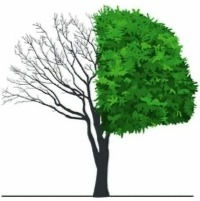Myth-Busting Winter Tree Care
- August Hoppe

- Nov 14, 2024
- 3 min read
Updated: Jul 3
Winter is often seen as a period of dormancy for trees. Many people feel that their need for tree care also goes dormant when winter happens. However, winter can be a great time to inspect, prune, remove, and care for trees. Let's take a look at common winter tree care misconceptions and the reality behind them.

Myth 1: Pruning should not happen in wintertime because you can’t see if branches are dead or not.
False! With the leaves off the trees, it becomes easier to see the structure of the branches, which makes it more likely to see which branches are rubbing, crisscrossing, or interfering with each other. Also, on most species, it’s quite easy to see which branches are dead. Especially for the trained arborist! Dead branches become coarser, bark starts to peel off, no buds are present on the ends of the branches and these pieces become very brittle.

Myth 2: Tree inspections should only occur when it’s warm out because you can get a better picture of the entire tree’s health.
Actually, when the leaves are off, it often becomes easier to see into the tree. Leaves can obscure views into the canopy of the tree. In the winter when leaves are off the tree, structural defects such as cavities, cracks, and broken and dead branches can become more apparent.
Myth 3: Hardwood trees like oaks and elms are generally strong and tough and can be pruned at any time of the year.
While oaks and elms are, for the most part, very durable, rugged, and strong trees, these species are susceptible to insect pests that can cause wilting diseases that can lead to death. Pruning of oaks and elms should take place in the dormant season when the insects (disease vectors) that spread oak wilt and Dutch elm disease are not present. Fresh pruning cuts in the wrong part of the year can attract insects that spread these devastating tree diseases.

Myth 4: Cold weather kills Emerald Ash Borer (EAB).
Several years ago during our last polar vortex winter, there was a rumor that it got so cold that mass amounts of Emerald ash borer larvae were killed. This information is false. Emerald ash borer larvae are found under the bark of trees. The bark is an insulator and curbs the effects of cold temperatures. We’ve never had temperatures cold enough in WI to kill off significant percentages of emerald ash borer larvae. Studies have shown that sub-zero temperatures may kill off some EAB, but not enough larvae were killed to justify ending protective treatments. Trunk injection treatments every 2 years are still considered the best defense against emerald ash borer insects.

Myth 5: Tree work is seasonal and can’t be done in the winter.
Hoppe Tree Service performs tree work all year long. The winter months can provide some distinct advantages over working during the growing season. Frozen ground can minimize turf damage and allow for heavier specialized equipment to access areas that are too wet at other times of the year. During the growing season, it can be challenging to work around prized perennials and beautiful gardens. Winter work with dormant gardens can avoid potential damage.
Wisconsin has four seasons and our arborists are well-versed in all of them. Consider winter tree inspections and winter work by Hoppe Tree Service. Contact us at 414-257-2111 to set up an appointment with one of our Certified Arborists or request a visit below.



Comments